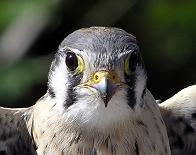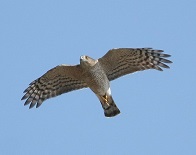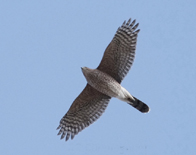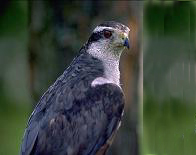SPECIES INFO
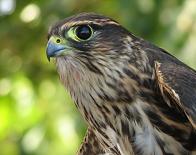
Merlin
Type: Falcon
The Merlin is a tough bird to peg to a specific flight line through the hawkwatch area...they simply seem to go almost anywhere and everywhere they like. They are VERY speedy flyers in level flight...and usually cross through the hawkwatch area so fast that visitors who blink will miss them!
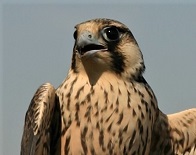
Peregrine Falcon
Type: Falcon
Peregrines can be seen migrating right along the cliff riding updrafts created by strong SW winds and even on other wind directions they almost always pass by within a couple of hundred meters of the Cliff itself. They rarely need flap at all as they cruise past in mere seconds!
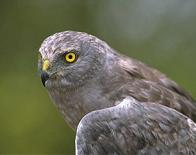
Northern Harrier
Type: Harrier
The Northern Harrier is one raptor species that typically provides the closest looks and great photo ops during migration as they fly a mere metre or two off the ground hunting the field in front of the count area. Note that the Harriers are sometimes seen soaring high above as well.

Osprey
Type: Osprey
Ospreys are typically cruising along above the cliff edge, using the updrafts of south and southwest winds hitting the cliff face. They may also be observed soaring with other raptors in kettles in thermals. They're very distinctive in flight, holding their wings in what looks like a "W" shape.
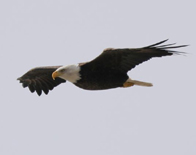
Bald Eagle
Type: Eagle
The best views of Bald Eagles tend to be as they cruise low along the cliff edge. Experienced observers will also look for the occasional eagle using the same flight lines as the Turkey Vultures. Bald Eagles have a very distinctive head-on flight profile...flat from wingtip to wingtip.
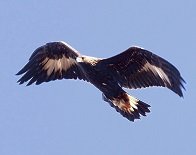
Golden Eagle
Type: Eagle
The Golden Eagles are most often spotted crossing through slightly inland from the cliff. Experienced observers know to watch for Golden Eagles mixed in with flights of Turkey Vultures. Their appearance can be very similar to the vultures, big and dark and exhibiting a slight dihedral in their wings.
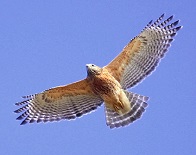
Red-shouldered Hawk
Type: Buteo
Red-shouldered Hawks are often seen soaring and kettling with Redtails and as they fly towards you their wings are more bowed. Note, however that Red-shoulders usually prefer to migrate on less windy days. They seem not to like fighting into a strong head wind as much as the Redtails.
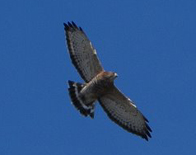
Broad-winged Hawk
Type: Buteo
Broadwings can be seen virtually anywhere along the roadway just inland of the cliff to several km's north back towards St. Thomas. The key to seeing Broadwings and possibly large kettles is finding their flight line and getting yourself underneath it. Kettles of several hundred birds are possible.
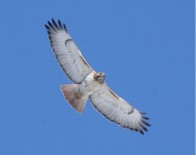
Red-tailed Hawk
Type: Buteo
Redtails migrate through the hawkwatch area in almost any location from the cliff itself, inland to "Sharpie Alley" and further north to the Fruit Ridge Rd. They are the most prominent species in kettles occurring in the latter part of migration. They will power their way into strong head winds.
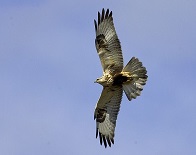
Rough-legged Hawk
Type: Buteo
Roughlegs pass through the hawkwatch area inland from the cliff. Observers will most often watch for Roughlegs starting at "Sharpie Alley" (just south of the ravine) and then moving further northward. They're typically seen migrating through individually in small numbers.
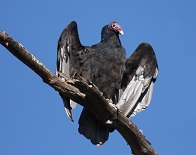
Turkey Vulture
Type: Vulture
They're very large dark birds and easy to spot spiralling upward, gaining lift and then power gliding off westward to the next thermal. Experienced observers will look for the flight lines being used by the Turkey Vultures to spot smaller raptors that are moving with them.
